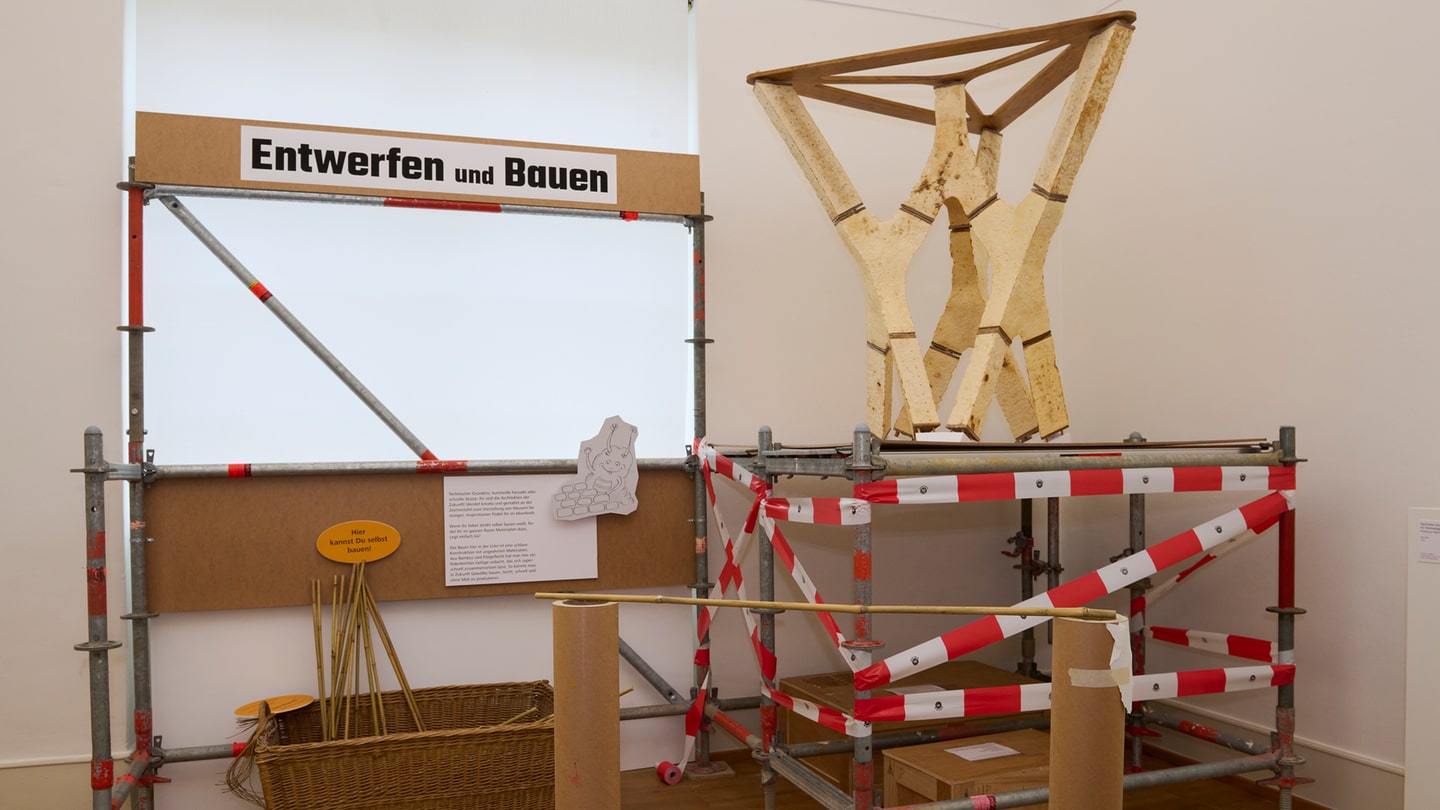How do we want to live in the future? Maybe in mushroom palaces or in walls made of old cutting boards? A new exhibition at Junge Kunsthalle Karlsruhe invites you to approach the issue of raw material shortages creatively and practically. “Mushroom Palaces and Bag Towers – Building for Tomorrow” aims to develop together new ideas about what sustainable construction should look like in the future.
Learn through play what recycling means
The fair is lively and noisy and contains different stations on the theme of Building for Tomorrow. It engages children and allows them to separate and sort different materials. Gloves are ready and a small wheelbarrow is ready.
Children aged 5 to 6 years in a daycare center learn in a playful way what recycling means and how new raw materials can be created. Another station with a large glass panel: behind it are building rubble. He wants to be looked at closely while searching for treasure under the building's ruins, like in a hidden object picture.
The building ruins behind a large glass panel should be examined closely during the building ruins treasure hunt, such as a hidden object picture.
press office
Kunsthalle Kunsthalle
Children must “understand” the exhibition
The Mushroom Palaces and Bag Towers exhibition is about building for tomorrow, a topic that will concern today's generation of children even more in the future.
This should be passed on to young visitors by becoming active themselves. “Hands-on,” is how Tamara Engert, the curator of the exhibition, describes it: understanding in the literal sense, with all the senses, feeling, looking, smelling.

press office
Art gallery
The exhibition conveys the experience of a construction site
Tamara Inger explains that real scaffolding forms the framework for the various stations in the exhibition; They are designed to convey the construction site experience in this way. There are also flashlights, magnifying glasses, and scales to closely examine, compare, and examine materials. With the help of art teacher Ina Ertelt, young visitors become explorers and researchers.
Children from KITA Himmelspforte in Karlsruhe learn in a playful way that crushed bricks can be shaped into new building materials, that textile scraps can be used as insulating materials when building houses, and that yogurt cups can undergo unexpected transformations, like shiny plastic or kitchen facades.

Examples of potential urban mining: Demolition of Landesbausparkasse in Karlsruhe
press office
Sylvia Stetter Calbus
There is a miko tree made of mushroom cells on the top floor
Things get artistic on the top floor of the Junge Kunsthalle, where kids can design their dream house on paper using printing technology. Another room in the exhibit invites you to build your own using boxes, bamboo sticks and pieces of wood.

MycoTree made from renewable mushroom mesh | Karlsruhe Institute of Technology, Professor of Sustainable Construction
press office
Art gallery
The miko tree is also on display there: a tree structure about two meters tall made of futuristic mushroom cell material, which can support the heavy arches that give the exhibition its name.

“Certified tv guru. Reader. Professional writer. Avid introvert. Extreme pop culture buff.”







More Stories
Samsung Quantum Dot TV: Art meets technology
Pitch: €56m for energy startup Reverion
Plastoplan: Plastics for Energy Transition